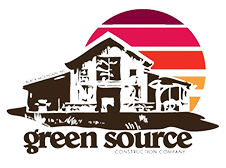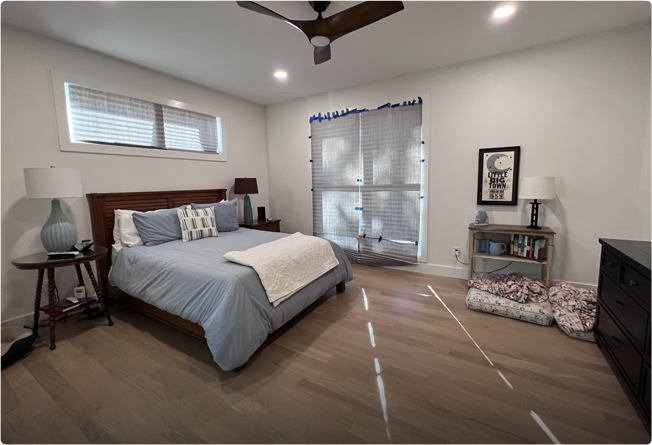Sustainable living has become increasingly important as the globe struggles with growing issues like resource depletion and climate change. The creation of Net Zero Homes is among the most innovative and promising developments in this field. Because of how these homes are built, their energy output and consumption are balanced over a year. Beyond energy efficiency, Net Zero Homes offers a comprehensive approach to sustainable living that includes social, economic, and environmental benefits. We will discuss the many advantages of Net Zero Homes in this blog and the reasons they are an essential first step in creating a sustainable future.
1. Environmental Benefits
Reduced Carbon Footprint
Houses with net zero emissions cut greenhouse gas emissions dramatically. These houses reduce their dependency on fossil fuels by generating electricity from solar panels and other renewable energy sources. This decrease in the use of fossil fuels contributes to the fight against climate change by significantly lowering emissions of carbon dioxide and other hazardous substances.
Energy Conservation
The energy economy is the primary consideration in the design of Net Zero Homes. These include energy-efficient windows, cutting-edge insulation, and highly effective heating and cooling systems. These features dramatically reduce the energy required for home appliances’ heating, cooling, and powering, resulting in significant energy savings.
Water Efficiency
Many Net Zero Homes are also designed to be water-efficient. They include low-flow fixtures, greywater recycling, and rainfall collection systems. These water-saving techniques encourage sustainable water usage while lessening the burden on nearby water supplies.
2. Economic Benefits
Energy Cost Savings
Lower energy costs are among the advantages of a Net Zero Home, which are felt immediately. Over time, homeowners can attain net-zero energy expenses since these homes produce as much energy as they consume. Selling any extra energy generated back to the grid is frequently possible, creating another revenue stream.
Increased Property Value
Net Zero Homes’ energy efficiency and sustainable aspects make them very appealing in the real estate market. Research indicates that compared to traditional homes, green homes—including Net Zero Homes—typically have greater resale values. Due to their rising property value, they provide a wise long-term investment.
Financial Incentives
Building and residing in energy-efficient homes is frequently rewarded with financial incentives from utility companies and governments. Tax credits, rebates, and grants are some of these incentives that can help defray the upfront costs associated with constructing a Net Zero Home. As a result of these financial advantages, Net Zero Homes may become more accessible and cheap over time.
3. Health and Comfort Benefits
Improved Indoor Air Quality
Superior ventilation systems built into Net Zero Homes guarantee a steady, clean air supply while eliminating allergens and contaminants. As a result, indoor air quality is greatly enhanced, which may benefit the residents’ health and well-being.
Enhanced Comfort
Thanks to its cutting-edge insulation and energy-saving windows, Net Zero Homes maintains an even interior temperature all year round. This removes drafts and cold spots to create a more pleasant living space, regardless of the outside temperature.
Noise Reduction
High-performance windows and excellent insulation both help to reduce noise. This will significantly benefit homes near busy roads or noisy urban areas. A calmer, quieter living area is the end consequence.
4. Technological and Innovative Benefits
Integration of Smart Home Technologies
Smart home technologies, which let homeowners monitor and manage their energy use in real-time, are frequently included in net zero homes. These systems may control energy storage devices like household batteries, optimize energy use, and automatically modify heating and cooling settings.
Renewable Energy Systems
Renewable energy solutions, like solar or wind turbines, are the foundation of Net Zero Homes. These technologies promote energy independence and lessen reliance on non-renewable energy sources by utilizing renewable energy sources.
Energy Storage Solutions
Batteries and other energy storage devices are common features of Net Zero Homes. They allow them to store extra energy generated during periods of high production. In times of low output, this stored energy can be used, guaranteeing a steady and dependable source of energy.
5. Community and Societal Benefits
Reduction of Grid Strain
Net Zero Homes lessen the total load on the public electrical grid by producing their energy. This can alleviate the burden on the grid, particularly during periods of high demand, and lower the possibility of blackouts and power shortages.
Promotion of Sustainable Living Practices
One way to visualize sustainable living is through Net Zero Homes. They can motivate and enlighten other community members about the advantages and viability of eco-friendly and energy-efficient practices. This knock-on effect may encourage more communities to embrace sustainable living habits.
Support for Renewable Energy Industries
The growing number of net zero homes benefits the renewable energy sector by raising demand for solar panels, wind turbines, and other renewable energy technologies. This can, therefore, spur innovation, cut expenses, and generate employment within the sector.
6. Long-Term Resilience and Adaptability
Adaptation to Climate Change
The purpose of net zero homes is to be climate change resilient. Even in severe weather or interruptions in the energy supply, homes may preserve comfort and functionality with their energy-efficient and renewable energy systems.
Future-Proofing
Net Zero Homes are already ahead of the curve as energy codes and building standards get stricter. Purchasing a Net Zero Home today protects the investment and averts prospective retrofit expenses by guaranteeing compliance with future standards and laws.
Scalability
Large apartment complexes, commercial buildings, single-family houses, and other building types and scales can all benefit from the concepts and technology employed in Net Zero houses. Because of its scalability, the Net Zero concept is a flexible way to promote sustainability in the built environment.
7. Personal and Lifestyle Benefits
Empowerment and Control
A Net Zero Home empowers its residents to control their energy use and its environmental effects. This empowerment may result in increased understanding and the adoption of alternative sustainable lifestyles.
Contribution to a Sustainable Future
People may significantly impact a sustainable future by living in a Net Zero Home. This decision sets an excellent example for future generations and demonstrates a commitment to environmental care and responsible living.
Enhanced Sense of Well-being
Better indoor air quality, energy cost savings, and the knowledge that one lives sustainably can combine to increase one’s sense of well-being and contentment with one’s living environment.
Conclusion
Net Zero Homes is a progressive method of building homes in line with the contemporary world’s urgent demand for sustainability. These homes are an attractive option for anyone wishing to live more comfortably, lower their carbon footprint, and save energy expenditures because of their advantages to the environment, economy, health, and society. Net Zero Homes are positioned to become the norm in the housing market as technology develops and people’s understanding of the value of sustainable living increases, leading the way for more robust and sustainable building practices.
By contributing to and supporting the creation of net zero homes, we can significantly reduce climate change, conserve resources, and create healthier, more comfortable living places. Ultimately, Net Zero Homes are an essential part of a sustainable future that will benefit all of us, not just a building fad.

